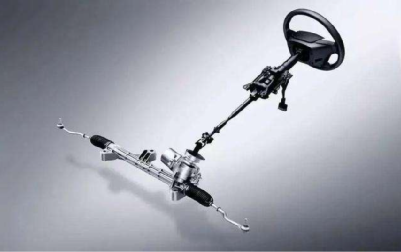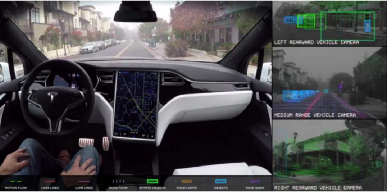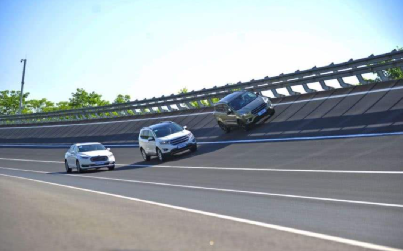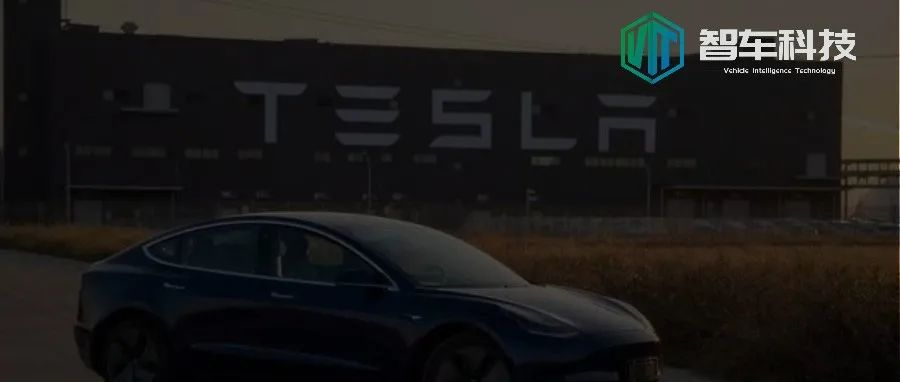Introduction
According to the information circulated on the internet, two Tesla internal employees disclosed that, in the fourth quarter of last year, when Tesla was trying to meet the annual delivery target and facing the worldwide chip shortage, Tesla quietly removed one of the two electronic control units from the electric power steering system of Model 3 and Model Y produced at the Shanghai Gigafactory. Tesla China’s official customer service said: “Every car we produce from the factory must comply with national regulations.” This means that Tesla did not directly refute the rumors circulating on the internet, and the authenticity of the relevant rumors should not be low.

What is the biggest impact of chip downgrading?
The biggest controversy of this downgrade is whether the future Model 3 and Model Y models can meet the software upgrade requirements of autonomous driving at the hardware level.
At last month’s Tesla earnings conference call, Elon Musk said that Tesla will have the ability to achieve full self-driving this year, and its safety performance will even be much higher than that of human driving. With software updates such as OTA, Tesla’s cars on the market can use the new AutoPilot software to achieve autonomous driving.
However, from the perspective of the entire vehicle, if the owner wants to achieve level 3 or higher autonomous driving, which means no need to operate the steering wheel, the steering system of the vehicle needs to have a Dual Electronic Control Unit System. Removing one electronic control unit from the steering system implies that there are still some unknowns about how to achieve autonomous driving. Even if high-level autonomous driving can still be achieved, it is still unknown whether redundancy and reliability of the system can be ensured.

Complete engineering verification is essential
Apart from concerns about autonomous driving functions, in traditional car companies, any minor engineering change requires extensive testing and repeated verification. From the component itself to the system level and then to the vehicle level, it needs to go through a long and complicated process. The reason for doing all this is to minimize the potential problems caused by engineering changes and nip them in the bud.## XPeng and Ideal are more professional than Tesla
In fact, during the period last year when there was a severe shortage of chips, many traditional automakers chose to lie flat, but companies like Tesla and domestic startups XPeng and Ideal did everything possible to ensure the delivery of their products. XPeng and Ideal sacrificed some driving assistance functions in the early stage to achieve the earliest product delivery when there was a shortage of millimeter-wave radar chips. After the chips arrived later, they added the corresponding configurations for customers.
Of course, Ideal and XPeng also compensated these customers in other ways. Unlike Tesla, which quietly removed a backup control unit chip, Ideal and XPeng openly informed their customers of their mode and gained the maximum understanding from them. From the perspective of customers, given the generous compensation, many consumers readily accepted this approach, thereby achieving a win-win situation between the manufacturers and consumers.
High-strength durability tests are effective in revealing various problems.
Especially for high-strength durability tests with higher intensity carried out by the automakers, several months of time are often enough to simulate ten years or even longer driving experience for customers, which is highly effective in detecting various problems. Therefore, although Tesla has only eliminated a backup electronic control unit this time, theoretically it will not produce any other impact on the electric power steering. However, without verification through experiments, especially high-strength durability tests, there is still a potential risk.

Overall, we appreciate Tesla’s efforts to ensure the delivery of its vehicles by doing everything possible to cope with chip shortage and maximize the company’s interests.
However, the public is concerned about the potential risks caused by this type of reduced parts, which may lead to the inability to achieve high-level autonomous driving in the future. We hope that Tesla can take the initiative to explain to the public and dispel people’s concerns about this model. After all, no consumer wants to buy a model with inherent defects. If this issue may affect upgrades in the future, Tesla will need to recall and repair the affected models.In 2021, Tesla was originally able to challenge the goal of delivering one million cars per year, as per the initial plan. However, according to the actual situation, Tesla was only one step away from achieving the goal. The delivery performance of nearly 940,000 vehicles was enough to satisfy and delight Elon Musk and his team. Without the constraints of chip supply, Tesla will be able to easily exceed one million deliveries, all based on an average vehicle gross profit margin of over 30%. However, it is foreseeable that the shortage of onboard chips will continue into the first half of 2022, and Tesla will strive to achieve even higher terminal deliveries in 2022.
Therefore, a more detailed and professional explanation of the relevant events will be the best way to dispel consumer doubts and establish a positive brand image. This is not only responsible to the customers but also to the Tesla brand.
This article is a translation by ChatGPT of a Chinese report from 42HOW. If you have any questions about it, please email bd@42how.com.
